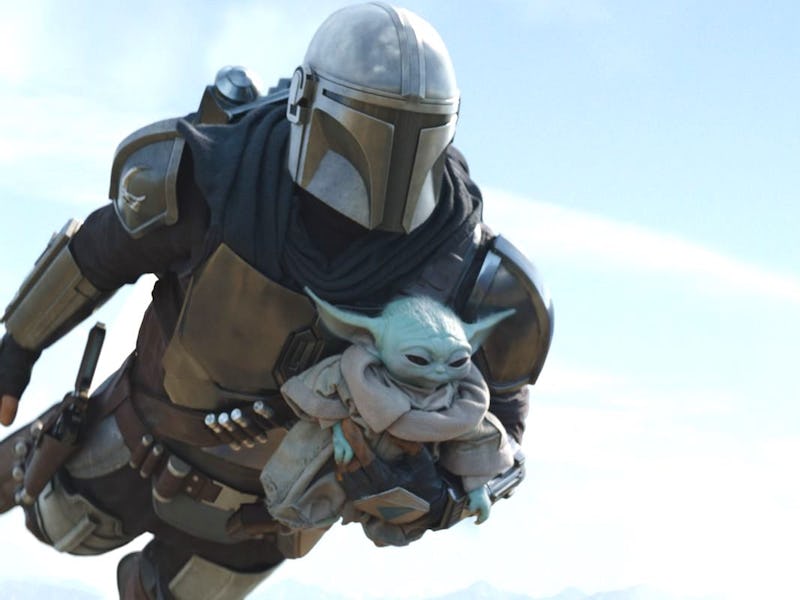Star Wars: A robotics expert reveals the The Mandalorian's biggest flaw
These are not the droids you’re looking for… to meet the demands of the modern world.

From snarky humanoid robots like C-3PO to the endearing swivels and beeps of R2-D2 and BB-8, the droids in the Star Wars universe live very different lives from the neglected Roombas and smart speakers we command off-screen. With fantastical — albeit, often impractical — designs, these bots are prepared to fight alongside the resistance and even serve up a neat canteen drink along the way.
However, back home on Earth, Texas A&M professor of computer science and engineering, Robin Murphy, tells Inverse that these droids would face some serious reality checks. In fact, upon closer inspection, a lot of the technology in Star Wars doesn’t really make sense.
Take the top-heavy AT-ST “chicken walkers” for example, Murphy writes in a new essay on the topic published Wednesday in the journal Science Robotics.
“Perhaps the Empire’s reliance on complicated robot mechanisms – compounded by Stormtroopers who cannot hit what they are aiming at – explains its demise,” Murphy writes.
In her latest essay on the topic, Murphy looks back at Star Wars’ two most recent shows – The Mandolorian and The Book of Boba Fett – to highlight some of the ways these droids differ from robots coming off production lines and out of laboratories today.
IG-11 in The Mandalorian.
Creaky joints – One major discontinuity that jumps out to Murphy in her essay is the functionality of droids like IG-11, the assassin-turned-nanny voiced by Taika Waititi in The Mandalorian. In an exciting shoot-out from the show’s pilot episode, IG-11 uses its rotating, sensor-packed head to deliver deadly shots in any direction. While this makes for unique fight choreography, it would also make the droid susceptible to failures down the road.
“Unfortunately, IG-11’s excess degrees of freedom are an invitation for joint failure and increase the demands on computation and motion control,” Murphy writes. “A more practical design would likely rely on a less thrilling, but more reliable, fixed array of sensors and effectors to provide the same 360° coverage.”
A protocol droid teaches students in The Mandalorian.
Robot workers – Droids in these shows may also be lacking basic vocational skills that would make them ill-equipped for the life of real world bots. In the Star Wars universe, it’s not uncommon to see robots performing advanced human jobs like bartending, teaching, or fighting. However, you’re less likely to see droids doing hard labor like working in mines or farms — often to the detriment of more humanoid species.
In the universe’s two most recent shows, Murphy says this absence is also seen in the lack of drone use by characters like Mando and Boba, which could give them the upper hand in pursuits.
“I’m not looking for the Star Wars universe to become a robot documentary!”
Murphy writes: “If Ingenuity can prevent Perseverance from getting stuck in Logan’s Pass [on Mars], why cannot bounty hunters deploy drones to avoid those narrow canyons perfect for ambushes?”
However, just like tech-adverse workers here on Earth, there can be underlying reasons that these bounty hunters avoid tech like this, including Mando’s traumatic history with droids.
“The lack of consistency about [characters] using drones sometimes and not other times seems a tad sloppy,” Murphy tells Inverse.
RD-2D meets Mando.
Robot brains – One area that Murphy tells Inverse is a “mixed bag” for Star Wars droids is their varying levels of artificial intelligence. While some droids, like Q9-0, can speak multiple languages, others like R2-D2 or BB-8 understand human commands but only respond with mechanical chirps. This is a functionality that Murphy says is both behind and ahead of today’s robots.
“This is the exact opposite of real-world A.I. where it is easy for a robot, or software assistant, to generate natural language sentences and produce human vocalizations, but difficult for it to parse and comprehend common sense directions,” she says.
While playful, beeping droids may be endearing and even understood on a galactic hero’s journey, they’re more likely to be frustrating in your own home — unless your R2 unit comes with a droid-English dictionary.
BD-1 in The Mandalorian.
Fact meets fiction – At the end of the day, Murphy says she’s still a huge fan of Star Wars’ droids in all their shapes and sizes and doesn’t hold their real-world inaccuracies against them. In the future, she hopes that the universe might even add some new droids to its roster including more widespread use of drones and marine robots to widen the universe even further.
“I love The Mandalorian, I’m not looking for the Star Wars universe to become a robot documentary,” she says. “More robots please!”
This article was originally published on